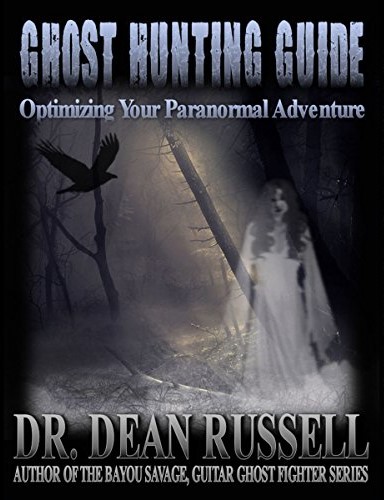Dean Russell’s Ghost Hunting Guide: Optimizing Your Paranormal Adventure (2012) is a rather different take on the business of paranormal investigation compared to the usual focus on procedures and items of equipment. Nor is it about the ghosts themselves, or likely locations where they may be found. In a short book, Dean Russell, who in his day job is an organisational effectiveness consultant, applies the principles of project management to show how investigations, or as he calls them ‘adventures’, can be conducted in a safe, efficient and enjoyable manner.
Elements applicable to the business world also operate in the context of paranormal research. Russell draws his approach from the American Society for Quality, which supplies the techniques used to enhance customer satisfaction and reduce costs by eliminating wastage. To achieve the goal of getting it right first time, planning is key, and the will to learn in order to improve. With preparation, the risk of unpleasant surprises is reduced.
To work well the investigation needs to be properly organised, while acknowledging Murphy’s Law – whatever can go wrong will go wrong. Russell says using the tools he outlines will help to mitigate those potential problems, or even resolve them before they manifest. The chaos and frustration likely to occur with sloppy organisation can be avoided, stress reduced, and time spent more productively.
It does of course require application, but should be more than offset by efficiency gains. Project management, Russell suggests, is 85% planning, 10% implementation, and 5% post-mortem analysis. Most ghost groups will devote a lot less than 85% of their total effort to planning. Sometimes it works out despite the lack of preparation and analysis, sometimes it doesn’t. Russell hopes to increase the odds it will, rather than trusting to luck.
Aids include planning lists, a charter outlining the scope and stages of the investigation, a Gantt chart on which to record planned and completed activities, and a risk matrix. Example forms are provided to guide the process and there are tips on how best to investigate. A chapter deals with making money from the enterprise with advice on formulating a business plan.
Russell stresses the need for a tight, balanced, competent team and good communications so everybody is clear about their role. Shared knowledge gained from finding solutions to problems needs to be fed back in a virtuous circle. If all goes smoothly and those involved have a professional attitude, customer expectations can be exceeded, leading to a successful outcome, and the team will have had an enjoyable experience.
There are some points I take issue with, the emphasis on the dubious Myers-Briggs Type Indicator for example. The division into sceptics, believers, scientists and action hunters seem artificial and not particularly useful. Jason Hawes and Grant Wilson are characterised as ‘sceptical believers’, which may confuse viewers of their TV shows, especially as such broadcasting is generally light on scepticism.
However, these aspects do not affect the core aim of providing what Russell calls strategic traction, encouraging organisers to think carefully about what they are doing, with improvement always in mind. This is an introduction and anyone wanting to apply the methods outlined would need to delve further, but as someone who did a mandatory course on Total Quality Management during my time at British Telecom and used the techniques outlined to run projects, I agree they should prove helpful.

